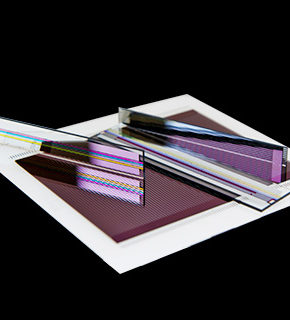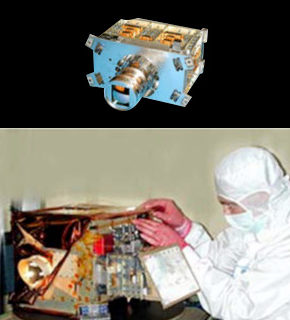
Rotate your tablet
for a better experience


Rotate your tablet
for a better experience

Sodern has a genuine and recognized expertise in Earth observation instruments as well as in scientific technologies embedded for both civil and military space programs:

Designed to meet the goal of increasing resolution, PLEIADES brings together the latest advanced technologies: Time Delay Integration (TDI), strip filters, structures and SiC (Silicon Carbide) mirrors. The use of 10 large CCD detectors in a very compact volume while supporting high thermal power is one of the main features of Pleiades with panchromatic detection and 4 spectral bands and the high resolution it offers: 30,000 pixels in panchromatic mode (PAN) and 7,500 pixels in color mode (XS).

Thanks to the two specific detection units DTA11 that equip the high-resolution stereoscopic instrument (HRS), the SPOT5 satellite has the capability to successively capture images forward and backward during its movement. Each detection unit consists of a single 12,000-pixel CCD detector and its analog electronics.

Main subassembly required for the implementation of very high resolution focal planes, the detection module allows the simultaneous capture of images at the front and at the back during the movement of the satellite. As a very high-tech element, it illustrates Sodern’s skills and know-how in:

Strip filters are one of Sodern’s flagship technologies for high-performance Earth-observation instruments. Designed to be assembled on detectors to form a multi-spectral detection module, strip filters offer high radiometric and spectral performance, high flexibility (design, spectral characteristics, number of channels) and high precision assembly.

Based on its know-how and expertise in star trackers, Sodern has developed navigation cameras and rendezvous sensors that guarantee the reliability of the approach of spacecraft to precisely align their positions.

The VDM was the key sensor guiding the automatic approach and stowage of the European Automated Transfer Vehicle (ATV) to the International Space Station (ISS). The VDM allowed the first three ATVs to be stowed: Jules Verne in April 2008, Johannes Kepler in February 2011 and Edoardo Amaldi in October 2012.
Extension of satellites missions in operation in GEO or withdrawal of satellites debris in LEO are conditioned by the emergence of new sensors which will make it possible to realize reliable appointments towards satellites little or not collaborative. To meet these needs, Sodern has developed the ARAMIS Disruptive Rendezvous Sensor (Autonomous Multi-Mission Integrated Sensor), which will embark on innovative image processing for all phases of these missions, from long distance detection to the final approach.
SODERN’s expertise in a wide range of technical disciplines has led to the production of outstanding scientific equipment combining cutting-edge technologies in the fields of laser and optics, detection and electronics, Mechanical and thermal engineering.
Sodern has been involved in the development of scrambling windows since the early 1990s with the MERIS instrument onboard ENVISAT. Used for electro-optical instruments and especially spectrometers, the equipment makes it possible to avoid the effect of the polarization of light on the radiometric measurement. Sodern was selected for ESA and Airbus Defense and Space for the development of the scrambling window of the Sentinel-4 UV-Visible-NIR spectrometer.

As part of the Horizon 2020 European Research and Innovation program, Sodern is developing the optical switches that will be installed on the photonic communication satellite demonstrator by the end of 2018.